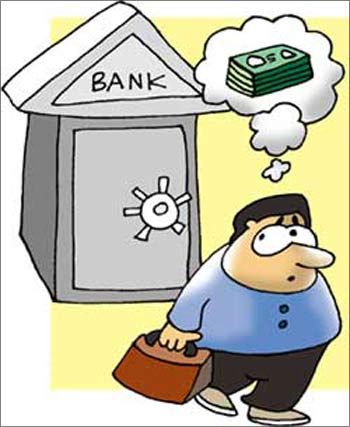
Only a fraction of defaulting loans is reported to central databases; what is made available for public scrutiny would be even less
How much ‘bad loans’ are banks stuck with? There seems to be some confusion over the exact sum with media reports and discussions in Parliament throwing up varied numbers.
The Reserve Bank of India has steadfastly maintained that the names of ‘wilful defaulters’ and loans that have gone bad should not be made public.
It has made this argument in the court to defend its position, even as it has provided the list to the apex court in a sealed envelope.
The problem with these diverse numbers is that the underlying definition used to define these loans varies.
According to RBI guidelines, defaulters are classified into three categories of ‘special mention accounts’: SMA-0, SMA-1 and SMA-2.
Those coming under SMA-0 are cases where interest or principal has not been repaid for less than 30 days.
Those where non-repayment is between 31 and 60 days fall under the SMA-1 category, while those between 60 and 90 days are termed SMA-2 (for non-banking financial companies, SMA-2 is for 60-180 days).
If the borrower does not pay back interest or principal for more than 90 days, the account is recognised as a non-performing asset or NPA.
NPAs are further classified into three categories -- sub-standard, doubtful and loss-NPA accounts.
The loan accounts need to be shifted from sub-standard to doubtful if they have been listed as NPAs for more than a year.
A loss-NPA asset is one where loss has been identified by the bank or internal or external auditors or the RBI inspection but the amount has not been written off wholly.
Once a particular loan to one entity is termed NPA, the bank is required to categorise all its loans to the same entity as NPA.
But, a company can continue to be categorised as NPA by one bank and not be an NPA for loans it has taken from another bank.
Further, the exposure of a bank is measured against an individual entity and not against the total exposure of group companies. So it’s possible for loans to one company be classified as NPA, but the sister concern might not be classified in a similar manner.
But, there are guidelines for banks to link different entities and consider them as a ‘group’, while offering new loans.
These include checking if the directors of one of the companies are on the board of others that have standing NPAs against them.
This, in turn, depends on how the central databases of these accounts are maintained.
Not all NPAs are treated as wilful defaulters.
There is a separate process for categorising defaulting loans as wilful or otherwise.
RBI has laid down the guidelines for that, too.
The banking regulator asks for four tests to be conducted to categorise a defaulting loan as a ‘wilful defaulter’.
First, if the entity has defaulted despite having the capacity to pay up; second, if the entity has diverted funds for some purpose other than which it was given the money for; third, if the money has been siphoned off; and, fourth, if the entity has not only refused to pay but has also disposed off the assets offered as security against the loan.
Disclosure norms
The classification of defaulting loans is one thing.
The other is what portion of this is reported to central databases for banks to share information among themselves and what is available for public scrutiny.
Information on stressed assets is held at two places -- the Central Repository of Information on Large Credits maintained by RBI and the separate databases maintained by the four credit information companies.
The CRILC database is “to collect, store and disseminate data on all borrowers’ credit exposures, including SMA-0, 1 and 2) having aggregate fund-based and non-fund based exposure of Rs 50 million (Rs 5 crore) and above”.
A part of this database is to be updated by banks on a quarterly basis.
This reporting follows a detailed format that requires more than 50 different kinds of information on large defaulters across four sections: exposure to large borrowers; technically or prudentially written-off accounts; balance in current account; and, details of non-cooperative borrowers.
HOW RBI CLASSIFIES DEFAULTERS
SPECIAL MENTION ACCOUNTS
- SMA-0: Where interest or principal has not been repaid for less than 30 days
- SMA-1: Where non-repayment is between 31-60 days
- SMA-2: Where non-repayment is between 60-90 days
NON-PERFORMING ASSETS
- Sub-standard: If borrower does not pay back interest or principal for more than 90 days
- Doubtful: If the loan has been listed as NPA for more than a year
- Loss accounts: If loss has been identified but the amount has not been written off wholly
DATABASES WHERE INFO IS STORED
- Central Repository of Information on Large Credits (maintained by RBI): Data not in public domain
- Credit information companies (CIBIL, Equifax, Experian, Highmark credit information services): Only loans where banks have filed cases in courts to recover money is available in public domain
Illustration by Uttam Ghosh/Rediff.com











